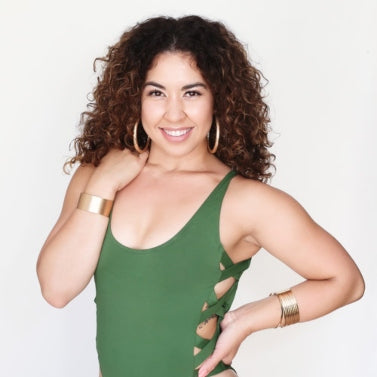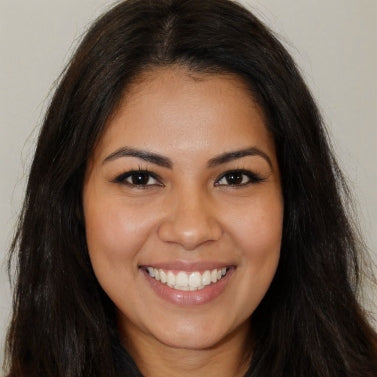News
-
7 Myths About Pole Dancing

Over the last 20 years, pole dancing has been gaining popularity. Though it’s long been known as an exotic dance form, it is now gaining traction as a fitness pursuit for everyone. There are studios all over, and universities are even offering courses on it.
Though the popularity of pole dancing is growing, the misconceptions about it still linger on the side. Correcting misconceptions and breaking through prejudice can be challenging, especially in dance. We’d like to call out a few myths about pole dancing, so they can’t stop you from giving pole dancing a try.
1. Pole Dancing Is Only For Women
This is probably the biggest misconception about pole dancing; it’s for everyone and every body; if you have a body, you can dance. Pole dancing requires a lot of physical strength, so it’s the perfect challenge for men who are bored of other workouts. Still buying into the myth? Check out previous men’s world pole dance champions. There are even whole lines of clothing designed for men, like men’s pole shorts.
2. You Should Be Slender To Dance
More classical dance forms might encourage a slight dancing figure, but most dancers in the business are trying to fight this stereotype. Check out this line of plus-size pole wear, something becoming more common in the dance world.
You don’t need to be skinny or in immaculate shape to start pole dancing. It’s one of the truly size-inclusive dances, where anyone is allowed and encouraged to take up space.
You may see a lot of fit pole dancers due to how demanding it can be. A side effect is that you could lose weight from dancing. You will practice drills and moves and perform cardio, endurance, and strength-building exercises, so weight can sometimes fall off as you learn to climb higher up the pole. Weight loss shouldn’t keep you from taking a class, but it shouldn’t be your primary motivation. Pole dancing is incredibly empowering no matter how you look or what you wear; it’s for you.
3. Everyone Dresses Provocatively
If the second myth bothered you, this one might’ve been the final nail in the proverbial coffin of your pole dance pursuit. Pole dancing is a respectable fitness class that requires appropriate equipment, including what you wear. Bare skin isn’t always about dressing suggestively; it’s about safety. Your exposed skin is the best way to grip the pole while performing aerial dance moves.
You can dress to your comfort level, especially when you’re just starting. If you want to treat yourself, there are even pole dancing grip leggings. But you can just wear what you already have for class. You should wear fitted clothes, like bike shorts and a workout tank, so you don’t get tangled around the pole.
4. You Should Have Dance Experience
While a dance background can’t hurt, pole classes incorporate moves from various dances like ballet, yoga, and gymnastics, among other aerial art forms. Some are more dance-heavy than others, so there are plenty of classes for beginners or those with no dance experience. Practice doesn’t make perfect: it makes improvement. So enroll in the course, even if you think you’re a horrible dancer, and you’ll learn and improve each time.
5. You Need To Be Flexible
Just like with your dance experience, you don’t need to be flexible to start taking classes. Your flexibility will improve through your classes, but plenty of moves are more strength-based and don’t rely on your flexibility. No matter your strengths, you will find some moves that feel like they were choreographed for you.
6. You Have To Be Sensual
Pole dancing has been around for hundreds of years. It wasn’t until the 1980s that it became strongly associated with sexy style dancers and strip clubs. There is a whole branch of pole dancing that can be sexy if you want it to be, but it’s also a great workout and an official international sport. Your dance form is whatever you would like it to be, from sensual to lighthearted. Pole dancing shouldn’t automatically equate to a strip club, though we do acknowledge and honor the strippers that pioneered pole dancing as we know it today.
7. Pole Dancing Is Only For Young People
Don’t ever let how you identify, look, feel, or how old you are hold you back from learning something incredible and new. Age is an arbitrary number that doesn’t control your life unless you let it.
You might be shocked at how diverse a pole dancing class is. There are even 60 and over lessons for any skill level; it’s a great way to stay active–or get active–and make new friends. Everyone is supportive of each other regardless of age. There are master's competitions if you’ve got a competitive streak.
Don’t let any of these myths dissuade you from taking a class. Whether you are a confident social butterfly who enjoys being the center of attention or a quiet wallflower, you can enjoy pole dancing. Pole dancing will give you a boost of confidence, teaching you to appreciate your body and personality the way they are. The world is full of diverse people, and the pole world accepts them all.
-
How do I take care of my pole wear?
Like most athletic apparel, pole wear comes with directions on the label for washing and care. However, pole enthusiasts have some tips to keep your pole wear in the best condition for longer. Continue reading for the tried and true ways to keep your garments in tip-top shape.

Sharon Sanders
Sharon Sanders does pole dancing as her hobby and regimen. She is also the co-founder of Philadelphia Weekly.
Handwash to Preserve the Texture
It is best to handwash your pole wear. In my experience, pole wear can be very sensitive as the texture provides additional grip between my body and the pole. Handwashing them will allow you to preserve the texture more. Hence, they will be usable for longer periods. Machine washing usually disintegrates the minute fibers in the pole wear, further degrading it faster. Hence, it is always best to handwash them.
Top Five Tips For Pole Wear Care
Pole dancing is a great way to stay fit, but taking care of your pole wear is also important. Here are five tips on how to keep your pole wear looking great:
1. Wash your pole wear regularly.
Pole dancing can be a sweaty activity, so regularly washing your pole wear is important. This will help to keep the fabric looking fresh and prevent any build-up of bacteria.2. Hang your pole wear out to dry.
After washing your pole wear, it's important to hang it out to dry. This will help prevent any shrinkage and keep the fabric looking its best.3. Store your pole wear in a cool, dry place.
When you're not wearing your pole, it's important to store it in a cool, dry place. This will help to prevent any damage from moisture or heat.4. Don't iron your pole wear.
Ironing your pole wear is not necessary and can damage the fabric. If you need to remove wrinkles, hang your pole wear up and let them fall out on their own.5. Be careful when shaving near your pole wear.
Shaving can damage the fabric of your pole wear, so it's important to be careful when shaving near it. If you must shave, use a very sharp razor to avoid nicking the fabric.I prefer to hand wash my pole wear because it is more gentle on the fabric. Machine washing can be too harsh and can damage the fabric over time. Hand washing also allows me to inspect the material for any damage or wear and tear.
Hand Wash In Cold Water
The best tip for taking care of pole wear is to wash them in cold water. While at it, use a washing detergent suitable for cold water so that it lathers and lauders for easy cleaning. While pole wear may be washed using a washing machine, it is much better to wash using your hands to avoid ruining it since they are made of delicate material.
Inez Stanway
Inez Stanway, CEO of Live Laugh Create.
>Use Mild Soap and Avoid Vigorously Scrubbing the Fabric
When it comes to taking care of your pole wear, there are a few key things to keep in mind. First, always check the care label before washing. Pole wear is typically made from delicate fabrics that can be easily damaged by harsh detergents or high temperatures. For this reason, it's generally best to machine wash on a gentle cycle using cool water.
If you do choose to hand wash, be sure to use mild soap and avoid scrubbing the fabric too vigorously. Additionally, always hang pole wear to dry; never put it in the dryer. The combination of heat and friction can cause the fabric to break down over time, leading to premature stretching and deterioration. By following these simple tips, you can help extend the lifespan of your pole wear and keep it looking its best.
This is a crowdsourced article. Contributors' statements do not necessarily reflect the opinion of this website, other people, businesses, or other contributors.
-
Top Tips For Pole Dance Safety

You may have been introduced to pole dancing through pop culture when the bachelorette party decides to try it in every rom-com. There is always alcohol involved, and it never goes to plan.
In the real world, pole dancing is a serious sport and art form that you should never perform under the influence of any substance. Safety is of the utmost importance due to the dangerous nature of this acrobatic exercise.
Practice these top safety tips to minimize your chance of injury and enjoy your dance:
Scrub In
You should take your prep seriously like a surgeon scrubbing in for surgery. Avoid putting on moisturizers, creams, lotions, or body oils before you dance. A shower is the best way to ensure your skin is clean if you have applied any of those products earlier in the day. Even if you just hopped out of the shower, you should always start with clean, dry hands. Your skin can still lose grip from the oil it naturally produces, so get in the habit of scrubbing in before you start your workout.
A bonus is that washing your hands frequently also reduces the spread of viruses in a class environment.
Check Your Equipment
Get into the habit of doing a safety check at home or in a class before you begin. The few moments it takes could save a window or your neck. Perform a load test so you don’t end up dragging the pole with you to the ground on your first pole climb. If you feel even a slight wiggle, check the screws. If you’re in a class setting, ask if you can move to a different pole until the staff can do a thorough safety check.
You should always have a safety mat when practicing new moves. It’s non-negotiable when it comes to aerial sports like pole dancing. Dancers often become overly confident and practice without one. All it takes is one slip or wrong move to make them remember the safety guidelines are there to protect them. Studios should always have them available for use, and if you are practicing at home, the cost of one mat is a small price to pay to ensure your safety.
Friends Don’t Let Friends Dance Alone
Speaking of safety, dancing is a group sport, so make sure you phone a friend. You can take turns being the spotter. A spotter can help or support you, can give you the confidence to try a new move, and will be there to catch your fall. They become critical when you learn the more advanced moves like laybacks, inversions, and releases. Spotters can also help you perfect your form, reducing your risk of injuries overall. Plus, dancing is always more fun with a friend.
Get Warm
Pole dancing requires strength, endurance, flexibility, and cardio fitness. Like any other sport, you need to warm up your muscles properly. The endless benefits include increased stamina, decreased fatigue, and reduced risk of injury. If you have ever torn a muscle or ligament, you should want to avoid that again at all costs. And in the world of aerial dance, safety should be your number one concern.
Don’t forget to cool down as well. It helps regulate your blood flow, allowing a more gradual recovery of your heart rate and blood pressure. This step makes you less prone to injuries and helps keep delayed onset muscle soreness (DOMS) away, so you can get back to dancing sooner.
Don’t Hide Behind Your Clothes
If you have spent any time in the pole community, you’ve probably learned that skin is in. But it’s for practicality. The more exposed skin you have, the more places you have to grip the pole. Opt for some high-waisted pole dance shorts with a comfortable fitted crop top or some sticky pole leggings if you want to cover up a little more.
Accessorize
While accessories finish off any outfit, remove any jewelry not made for pole dancing. Gloves are another accessory that doesn’t typically pair well with this dance form. Try out some grip aids or knee pads for pole dancers if you want to accessorize your polewear.
Listen To Your Body
Lastly, know your limits. It can get exciting learning new moves, and you can easily get caught up and forget to respect your current level of skills. If you find yourself in a frightening position, don’t let go of the pole. Be patient, and slide down the pole no matter how awkward you feel. The goal is to get you safely back on the floor.
Listen to your body and respect it. Rest when you feel tired. Ease into your workout if you feel stiff, tight, or sore. Don’t reattempt any moves that are hurting you that day. Always remember to hydrate, dance, and have fun.
Infographic
Pole dancing is a serious sport and art form that should never be practiced while under the influence of anything. Due to the risky nature of this acrobatic activity, safety is of the highest concern. Use this essential safety advice to reduce your risk of harm and have fun dancing.

Video
-
How can I become a more well-rounded pole dancer?
Once you have mastered the basics, you may be looking to expand your repertoire and become a more experienced dancer. These pole enthusiasts have their recommendations for becoming a more well-rounded pole dancer and developing your craft.

Christina Moffitino
Christina Moffitino is an entertainer, educator, and movement motivator. Know more about her at Poofy INC.
Train in a Variety of Styles and Push Outside Your Comfort Zone
To become a well-rounded pole dancer, it's advantageous to train in a variety of styles and push outside your comfort zone. Once you master your basics (grip, poses, and inverts) train with instructors at different studios and learn from professionals in their styles. It's best to experience and train in static and spin poles, exotic, low flow, tricks, and choreography, in heels and barefoot. Take workshops that help you develop different skill sets and master tricks. Continue to refine your skills and remix to incorporate what you learned to help develop your style of pole dancing!

Veronica Thompson
Veronica Thompson is the COO of Everyday Power. She also holds an MBA. In her free time, she bakes, dances, and paints.
Patience is the Key
Though physical and mental training can [take] you far in becoming a more rounded pole dancer, it is also very important to be patient. Always remember that no one is an expert on their first try, not even the prodigies. Set a time to train and diversify your coaches. Also, be kind to yourself, set attainable goals, do your training, then be patient. This is the only path to becoming a more rounded pole dancer.
Build Your Strength, Flexibility, and Stamina
To become a more rounded pole dancer, it is important to focus on building strength, flexibility, and stamina. Strength-training exercises such as weightlifting and calisthenics can help to build the muscle groups needed for advanced pole tricks. Flexibility training, such as stretching and yoga, can help improve the range of motion and prevent injuries. And finally, endurance training will help improve your overall stamina and enable you to better withstand the rigors of performance. By focusing on all three of these areas, you can become a well-rounded pole dancer who can perform at the highest level.
This is a crowdsourced article. Contributors' statements do not necessarily reflect the opinion of this website, other people, businesses, or other contributors.
-
What To Wear To Your Pole Dancing Class
 (Konstantin Mishchenko/Pexels)
(Konstantin Mishchenko/Pexels)Your first pole dancing class can be daunting even before considering what to wear. Pole dancing is associated with wearing as little as possible, but does that apply to beginners? How do you even make that happen with your current workout wardrobe?
Luckily, your outfit is based more on your pole dancing level. Your garments should be fitted but breathable and make you feel comfortable. You must invest in pole dancing clothing to complete the trickier moves as you progress. Here are some tips and factors to consider when deciding what works for you.
For Your First Class
Initially, you will probably learn leg grips, so a typical workout outfit will work to start. Wear what you are most comfortable in; You will want a pair of shorts, a t-shirt, and some sweats to layer over the top while you warm up. You will probably be barefoot, but some sneakers or running shoes are always a safe bet to bring to your first class. As you progress, what you wear will become more critical for your safety and ability to do certain poses.
Factors To Consider For Your Clothing
Material:
Certain materials can be pretty slick, so selecting articles explicitly made for pole dancing is ideal. The movements involved are more complex than other exercises, so you’ll be grateful for the four-way stretch technology and double seams that are standard for polewear.
Fit:
Pole dancing is notoriously inclusive, so you can expect to find plenty of clothing options to fit your unique needs. As more men discover the benefits of pole dancing, there’s an expanded selection of male pole dance outfits to choose from. You’ll also find plus size pole dance wear to show off your fuller figure. You should never feel like your gender or body type limit you from thriving in pole dancing. There’s an outfit for you and a community ready to welcome you.
Style:
Function, good fit, and comfort should still be the primary goals when selecting your outfit. You want to feel confident in your dance outfits to focus on your moves. Depending on the style of class, dance, or if you are competing, your costume selection may fluctuate. These are some of the basics of any outfit to consider:
- Tops
As you get more experienced, you might wear a pole dancing top that looks like and doubles as a sports bra. These allow your arms, shoulders, back, and stomach to be exposed, which will all grip the pole more effectively than grippy fabric. You can also have full-body pole dancing bodysuits or catsuits, which provide more midsection coverage. Sleeve lengths vary depending on your level and preference as well.
- Bottoms
If you haven’t researched pole dancer outfits, you may think your choices are limited or be concerned about the lack of coverage. But there will be a look for you. You can peruse high-waisted pole dancing shorts that give you more coverage over your stomach and low back. Low-waisted shorts will likely give you maximum skin exposure and grip while keeping you decent. Cheeky shorts are typically a happy medium, giving you a range to choose between high-waisted coverage or barely-there shorts.
Regarding pole dancing bottoms, there are open and flowy or mesh pants options. There are your standard full coverage sticky, fishnet, or garter-styled leggings to try out. There are also tights and chaps. No matter your size or style, there will be something perfect for you.
- Shoes
Again as a beginner, you might prefer sneakers or bare feet. If you’re a dancer and already have canvas ballet, jazz, or barefoot dance socks, those can also work in classes. You want to avoid slick socks to stay in control of your moves.
You can wear high heel pole dancing Pleaser shoes in specific studios, which aren’t just for aesthetics or more sensual moves. They will help your posture and height, improving your inner core strength and giving you longer spins. You have various styles of heels and boots for dancing to fit your needs.
What’s Underneath Is Just As Important
You don’t want to worry about what will pop out when you swing around a pole. Supportive underwear is a must. Invest in some pole-friendly sports bras, underwear, or ballet belts, depending on your needs. Bike shorts and yoga shorts can work in a pinch too. If you can’t trial your undergarments on a pole in the privacy of your own home, then some yoga, HITT moves, or somersaults will give you an idea of how they will hold up while dancing.
Don’t Forget To Accessorize
Skin grip, legwarmers, and pole grip knee pads are the more practical class accessories. But there are glittery skin grips, stockings, garters, harnesses, shoe covers, and even jewelry, all made for pole dancing. Whether you are looking to wow in your competition costume or for some inspiration for your class attire, you have nearly unlimited options to make your look your own.
Ultimately, what you wear to dance in is dictated by what fits you, is comfortable, and what won’t restrict your movements. The more skin is exposed, the more grip you’ll have, but you can still grip without discomfort. Get sticky pole leggings and long sleeve combos or a sticky catsuit; you can be covered from head to toe if you wish.
If you avoid baggy or loose clothing, which can become tangling hazards, you can wear what you want. Except for exhibitions or competitions, everyone will be more focused on their own practice, so what you wear is all for you and your dance. Keep it fun and, most importantly, true to you.




